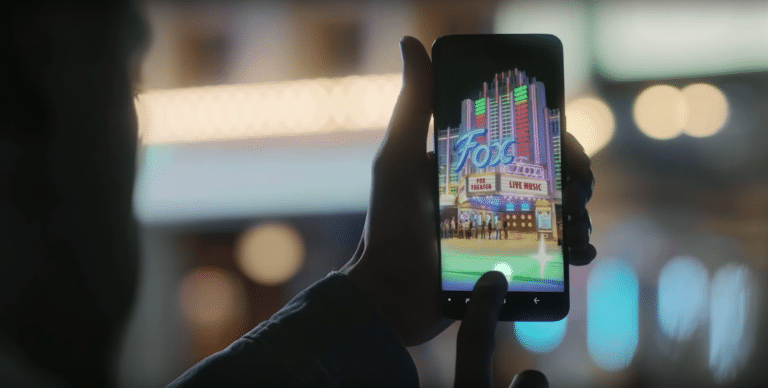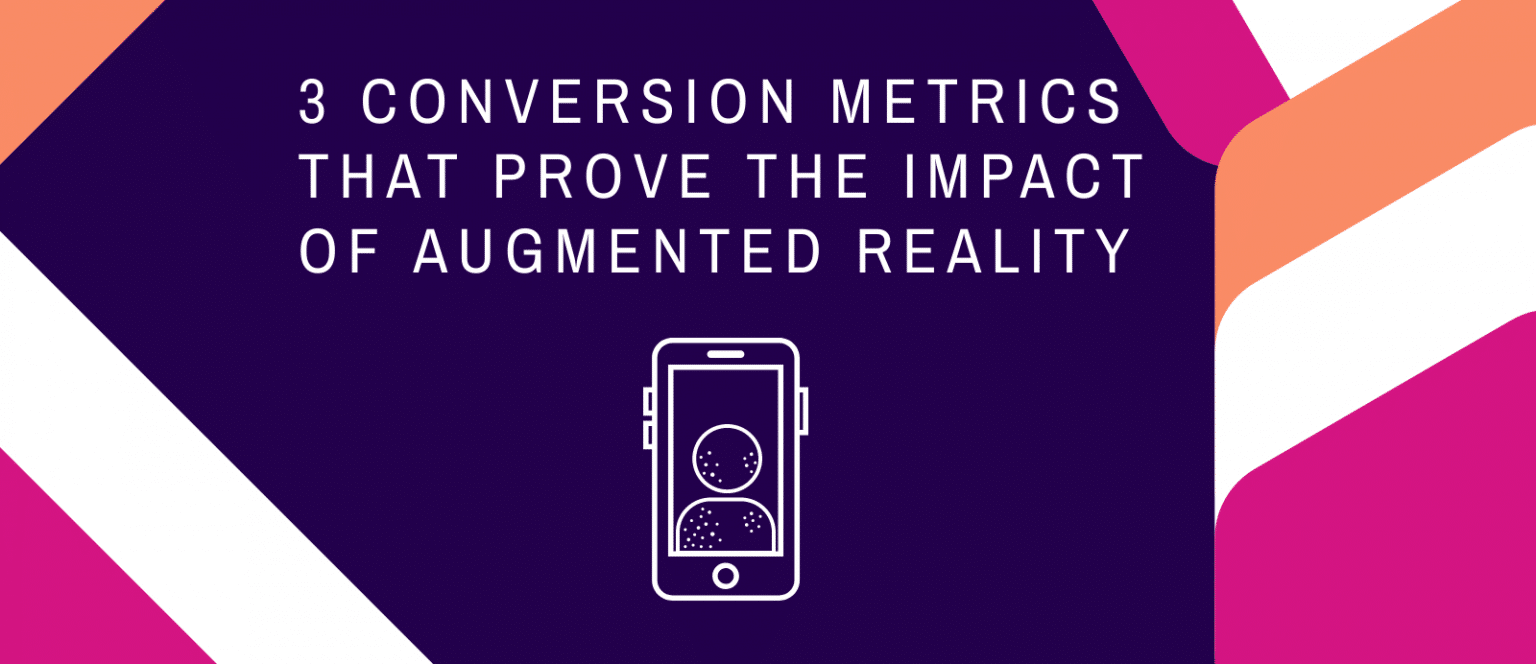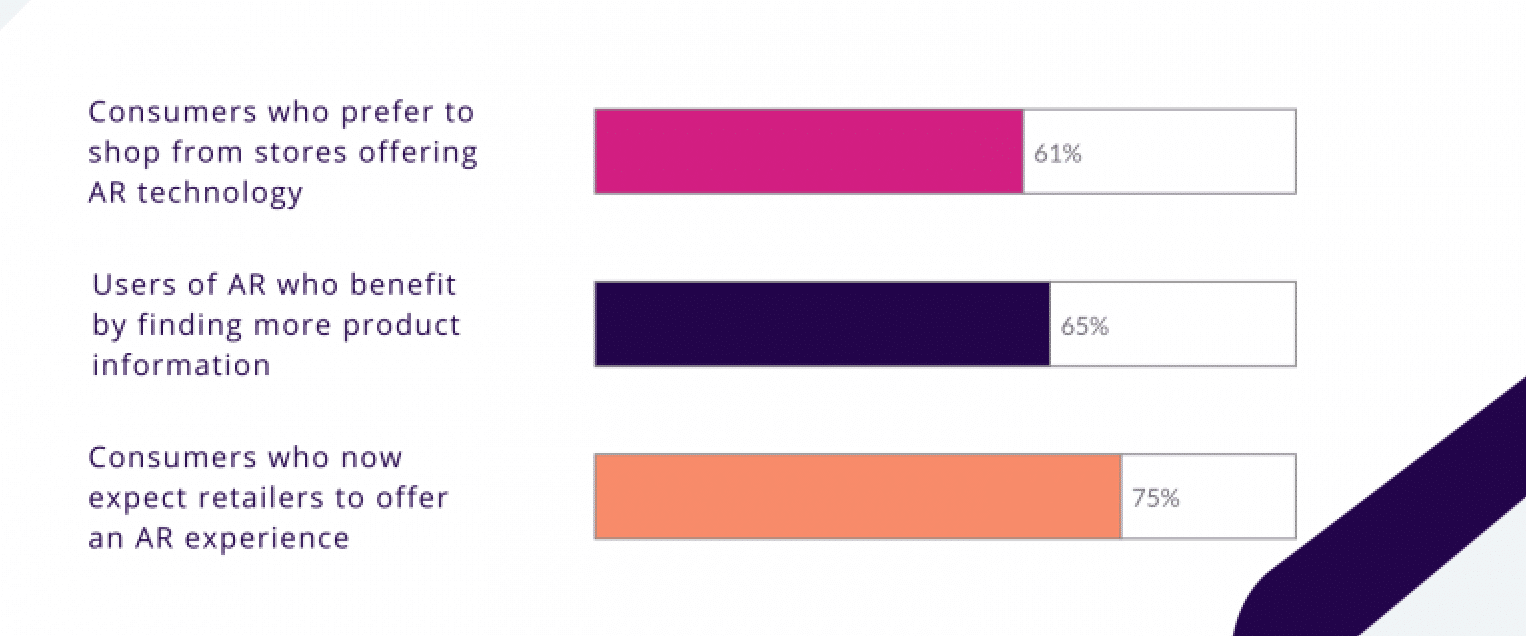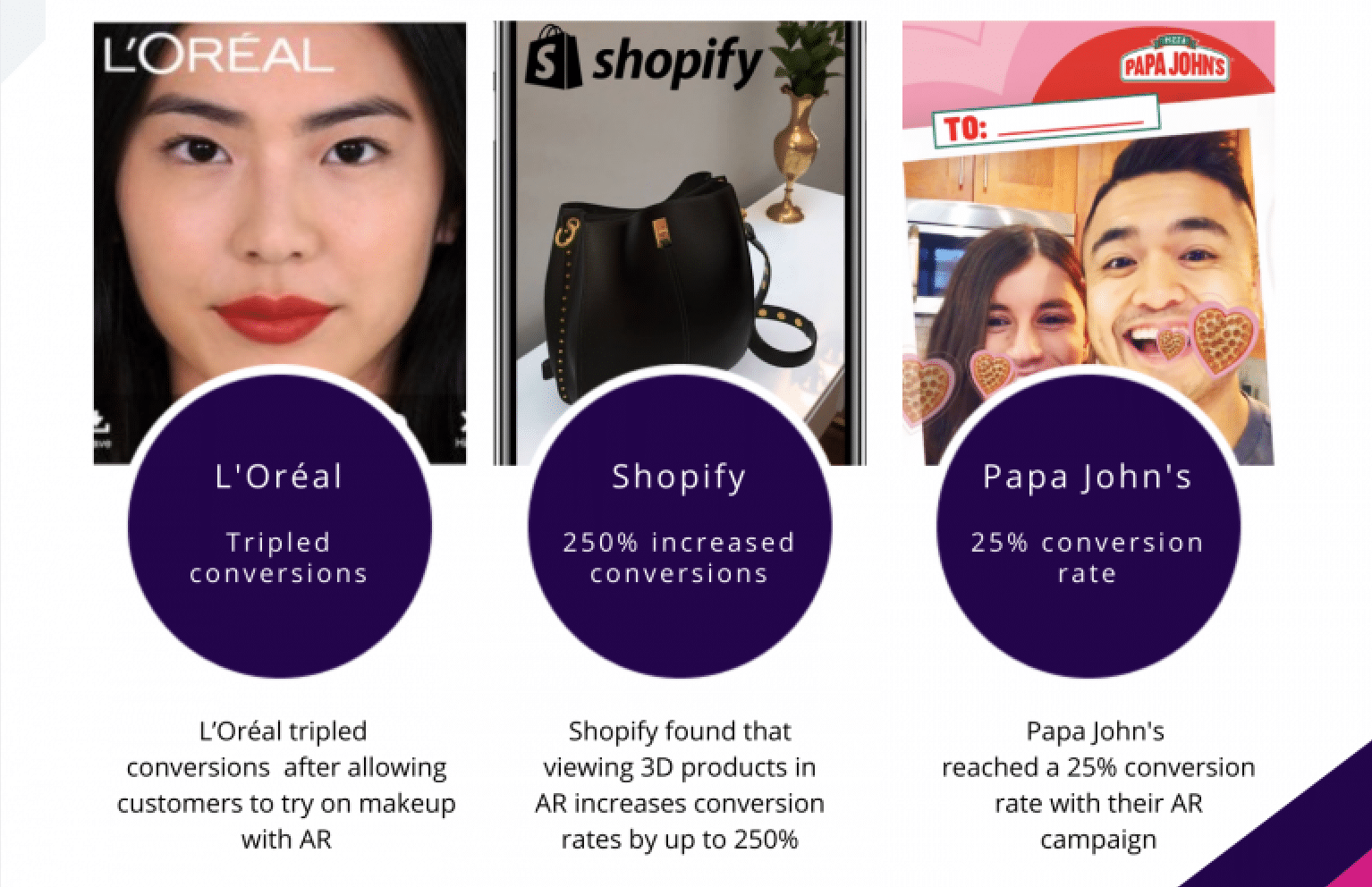
This article is the latest in AR Insider’s editorial contributor program. Find out more or contact us to participate here. Authors’ opinions are their own.
3 Conversion Metrics That Prove the Impact of Augmented Reality
by Liz Kindt

Augmented reality in 2020 is more than just a trend. It has yielded real results for brands, and kept consumers coming back for more.
AR is a powerful tool that consumers no longer just desire, but expect. Brands who have implemented AR in Retail, Education and Healthcare are now reaping performance benefits and seeing increases in conversion rates. These statistics prove what AR has achieved.
1. 75 Percent of consumers now expect retailers to offer an augmented reality experience.
The most surprising turn in the trend of Augmented Reality is just how many consumers expect AR to be a part of their shopping experience.
Brands who implement AR provide their shoppers with more product information and allow consumers to see more of the benefits that a product can provide. Consumers are more likely to purchase if they can interact with a brand’s products.
These statistics demonstrate the thinking behind what drives consumers to purchase and why they feel that brands who use AR are more tailored to their personal needs.

2. Brand Awareness Increases by as much as 70 percent with the creative use of AR.
Based on a Zappar report around the brain analysis of people using AR, brand awareness can increase by up to 70% through the use of Augmented Reality.
No wonder brands are implementing AR campaigns like never before. In order to build a sense of loyalty and a lasting impression on their customers, brands have found that AR is able to do this in an effective and long-term way.
AR ads are more successfully remembered by consumers because of their interactiveness and ability to be shared. In fact, AR ad revenue reached $1.58 billion in 2019, in large part because of its ability to be a wide-reaching medium.
Through users’ ability to share ads like NFL’s 100th season Snapchat campaign and L’Oréal’s AR tech showcase products, brands have reached millions of viewers through social media.
With numbers like these, it’s no wonder that that ad revenue for AR has reached well over the billion-dollar mark. Brands are recognizing the value of this kind of advertising and taking advantage of its campaign performance.
Consumers have spoken, and so have their actions. If share rates and revenues continue at this rate the AR advertising industry could reach $8.8 billion in 2023, with an 81% compound annual growth rate.

3. AR ads are performing incredibly well, with conversion rates in the 20-80 percent range.
Conversion rates are the best measure of the percentage of visitors to a website that complete a desired goal (a conversion) out of the total number of visitors.
Higher conversion rates indicate that consumers are satisfied with a large part of the marketing strategy, website or product that a business has to offer. Although every ‘high’ conversion rate is unique to each industry, a twenty to eighty percent is over ten times higher than the average conversion rate across all industries on the search network.
As mentioned, campaigns such as L’Oréal’s AR showcases have seen increased conversion rates, and have continued to work with brands such as Poplar in order to successfully create even more. Plus, brands like the pizza chain Papa Johns have joined in and gained a 25% conversion rate with their AR campaigns.

Final Words
The proof of AR is in its conversions. While many brands are still using AR to engage their followers and increase brand awareness, the benefits of AR as a conversion tool are only increasing.
As more and more brands continue to report on successful conversion rates, we can expect adoption of AR to move away from simple engagement into an active channel in the marketer’s toolkit to drive higher conversions and sales.
 This article was contributed by AR ad startup Poplar. See the data from this article presented altogether on one infographic below or on the company’s blog.
This article was contributed by AR ad startup Poplar. See the data from this article presented altogether on one infographic below or on the company’s blog.

